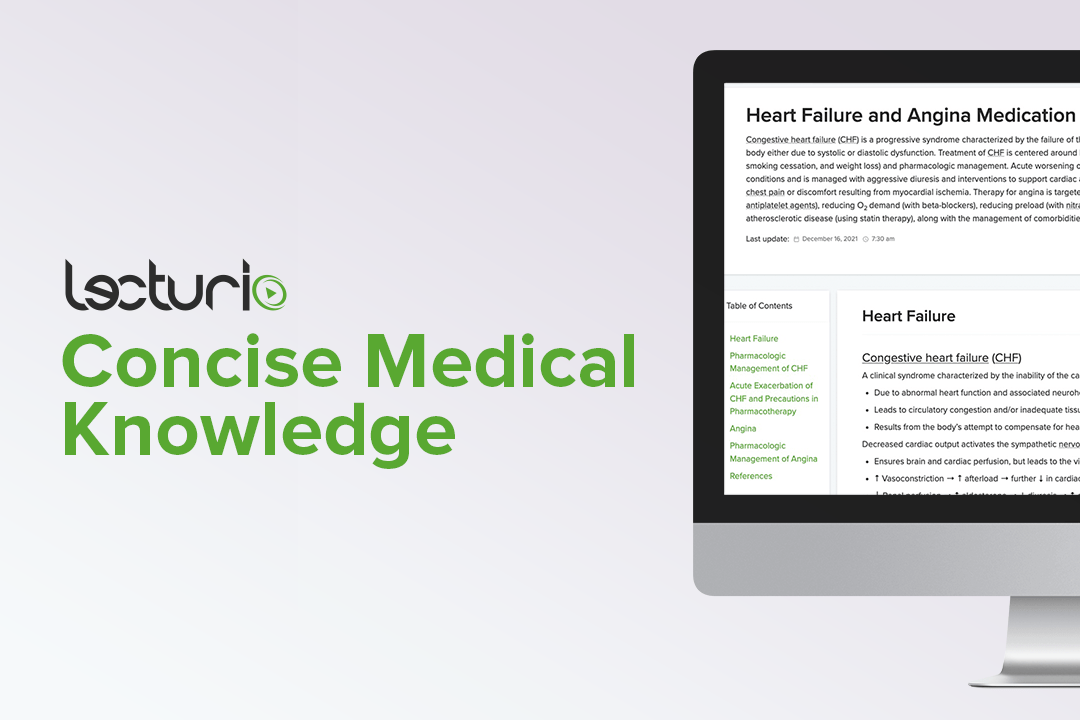Playlist
Show Playlist
Hide Playlist
Metabolic Modifiers and Slow Sodium Channel Inhibitors – Heart Failure and Angina Management
-
Slides Metabolic Modifiers Slow Sodium Channel Heart Failure Angina.pdf
-
Reference List Pharmacology.pdf
-
Download Lecture Overview
00:01 A new category of drugs in the management of angina are the pFOX inhibitors. 00:06 Now, these drugs are Partial fatty acid oxidation inhibitors or pFOX inhibitors. 00:13 It increases the efficiency of oxygen utilization and it shifts energy production from the fatty acids over to glucose. 00:22 There may also be an effect on the slow sodium channels within the heart. 00:29 We're not entirely sure of this, but it's certainly one of the potential mechanisms. 00:34 Despite this, ranolazine has little effect on heart rate or contractility. 00:39 The next category of drugs are what we colloquially refer to as funny channel inhibitors. 00:44 Ivabradine is at this point in time, one of the few agents that do this. 00:49 It inhibits the slow sodium/potassium channel of the sinoatrial node or the IK current. 00:56 We call it funny channel because of the appearance of this channel on electron microscopy, and also the behavior of it. 01:04 So the scientists that first discovered it called it the funny channel. 01:08 Now, this particular agent has many different trade names in many different countries. 01:13 So, when you are looking up the drugs in your own country, have a look at my list there and I've got the trade names listed for each of the major countries. 01:23 What you see with this medication is that it reduces the heart rate because it reduces that pacemaker slow and recurrent. 01:31 There's no real change in inotropy it just really reduces the heart rate and it's particularly effective. 01:37 It's used predominantly in angina, and in heart failure. 01:41 It's also used in inappropriate sinus tachycardia. 01:44 Now, when we take a look at the effectiveness of this agent in angina versus, say a beta blocker, we found that it was actually more effective than a beta blocker and as effective as some of our calcium channel blockers. 01:57 In terms of the adverse event rates of this medication, there is something called luminous phenomena. 02:04 And it's a very bizarre kind of a description. 02:07 Patients describe walking around in a bright haze. 02:10 So they feel that, say a light has a more luminous quality to it, it has more of a fuzzy quality to it, and they walk around and they feel like they're in a highly lit up corridor. 02:24 So, it's a strange kind of sensation. 02:26 It's hard to put into words, but when your patients come to you and complain about it, it's worthwhile listening to them. 02:32 I also want to point out as well, that this is something that will be on exams because it's such a unique phenomena related to this drug. 02:41 Of course, it's going to cause some patients to have excessive bradycardia. 02:45 It may cause an AV block, it can cause dizziness due to either low heart rate or low blood pressure, and it can cause a blurred vision that is separate and different from the luminous phenomena that I was talking about. 02:58 Now, we don't want to use this agent in patients who already or excessively bradycardic or have Sick sinus syndrome. 03:05 We don't want to use this agent or we want to use this agent with caution because other agents who are CYP 3A4 inhibitors can interfere with the area under the curve. 03:17 So an example of that is, say ketoconazole, or macrolides. 03:22 We want to be aware that it can have an interaction with verapamil or diltiazam, as well. 03:28 We don't want to use this medication in atrial fibrillation, because the indications are specifically excluding atrial fibrillation in the United States, and Canada. 03:38 So, be aware that there are some limitations with using this drug. 03:42 Now, remember that we're using this agent in patients who have heart failure, as well, with cardiac reserve. 03:51 We also have to be cautious in patients who have underlying tachycardia because you sometimes can exacerbate an arrhythmia. 03:57 Okay, that's great. 03:58 You managed to make it through this lecture, you did really well. 04:01 I know that you're going to do really, really well in your exams. 04:04 Go in there with confidence and show them what you know.
About the Lecture
The lecture Metabolic Modifiers and Slow Sodium Channel Inhibitors – Heart Failure and Angina Management by Pravin Shukle, MD is from the course Cardiovascular Pharmacology.
Included Quiz Questions
Which statement regarding ranolazine is most accurate?
- It is an antianginal agent.
- It increases the consumption of fatty acids.
- It activates the funny ion current.
- It is a first-line antispasmodic medication.
- It has a significant effect on heart rate.
Which statement about ivabradine is most accurate?
- It reduces heart rate by inhibiting the funny ion current.
- It reduces heart rate by blocking calcium channels.
- It reduces heart rate by blocking slow sodium channels.
- It reduces heart rate by blocking potassium channels.
- It is particularly useful in patients with sick sinus syndrome.
What is associated with ivabradine?
- Luminous phenomena
- Increased heart rate
- Increased inotropy
- A partial fatty acid oxidation inhibitor
- Decreased inotropy
What is associated with ranolazine?
- Increased efficiency of oxygen utilization
- Inhibition of the slow sodium/potassium channel
- Decreased heart rate
- Increased contractility
- Contraindicated in sick sinus syndrome
Customer reviews
5,0 of 5 stars
| 5 Stars |
|
5 |
| 4 Stars |
|
0 |
| 3 Stars |
|
0 |
| 2 Stars |
|
0 |
| 1 Star |
|
0 |




